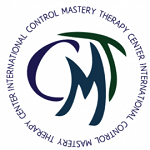- Have any questions?
- 510-612-6392
- infocmtcenter@gmail.com
what roles do dreams play?
July 7, 2017Techniques of psychotherapy :The Function of the Frame: It is how a Good Therapist makes their Patient Feel Safe!
July 4, 2017It did in at least in at least three ways:
(1) It places more emphasis on interpersonal relationships,
(2) It stresses the infant’s relationship with the mother rather than the father, and
(3) It suggests that people are motivated primarily for human contact rather than for sexual pleasure. Again- The term object in object relations’ theory refers to any person or part of a person that infants introject onto their psychic structure and then later project onto other people. Thus, an object is something like Freud’s notion of a superego, which children introject. That is, children take into their psychic structure the morals and ideals that they see in their parents. These ideas, however are often out of conscious awareness and remain hidden from our patient’s decision making while affecting the outcomes!
So we are now taught that we must determine how our patients came to be – that is, to think and feel what they think and feel, and how are these thoughts and feelings then expressed? It is now at least a two-person process of development.
Our first question as a therapist is:
How do we come to know about these crucial processes for our patients? How do we help our patient’s discover these truths for themselves? How do we help their (unconscious) feelings attain form so that they can become aware of their motivations, needs and desires?
A contemporary and complementary psychoanalytic account of the ways in which “feelings can attain form” is through that of “experience-near” inquiry, a concept which is not quite the same as working within the “Here and Now”. It was developed by psychoanalyst Franz Kohut (see, e.g., Kohut, 1978), and subsequently elaborated in the socio-cultural field by the cultural anthropologist Clifford Geertz (1974). I think they are useful to illustrate an important component of the dance of a object relational psychotherapy.
“Experience”, for Geertz arises, in the materialization of human feeling into the symbolic forms that compose cultural systems, whether they are material artifacts or social practices. Put simply, experience-near inquiry (or treatment) is an investigation of the “forms of feeling”. It would respond to the question: what forms (environment) (dance) does (our therapeutic) practice provide for human feeling so that these feelings can become available for thought and communication between therapist and pt? It asks the question of how can the spaces and experiences of human interaction be harnessed to enable a form of inquiry, a conversation, and a shared experience? That eventually enhances the treatment and promotes innovations within it. This is what Stern and his colleagues’ (1998) refer to as of creating ‘moments of meeting’. Creating this state of the possibility of a safe interaction and exploration is what I believe is the goal of the “dance of psychotherapy” and what control mastery theory promotes and focuses on (Safety).
In order to progress and develop (in therapy) one must discover a method of communication with one’s partner (therapist and pt). Essentially, it is an understanding of symbolization, whereby words or images are used to capture emotions and sensations so that they can be thought about and communicated to others. Symbolization is rooted in experience, and having a theory of symbolization can help to establish epistemological principles for psychotherapy practice. Alternatively this can be done through conducting trial actions and many symptoms and enactions can be understood as such in control mastery theory.
Within the British psychoanalytic tradition, and particularly within Wilfred Bion’s thinking on symbolization (Bion, 1970), the process of finding forms for human feeling depends on the “container-contained” relationship, whereby the symbol provides a container for feelings. In my metaphor this is found in the safety of dance of therapy. Our goal is to help our patients find verbal expression rather than having to resort to enacting in order to communicate. Bion’s original model for the container is provided by the nursing mother who is engaged in feeding her baby both emotionally and physically, and in so doing performs an important psychic function. This will help the infant to moderate anxiety aroused by an environment, which is as yet too complex to process. When this “feeding process” goes well the nursing mother holds her infant both in her arms and in her mind, and thus “contains” and modifies its bodily sensations and feelings. Bion uses the metaphor of “digestion” to describe a process in which she “metabolizes” fragments of sense data for the infant. In his view these would otherwise appear as “bizarre objects” which are threatening and devoid of meaning. The mother thus demonstrates to her baby that the sensory world can be experienced, thought about, and rendered coherent. While the infant is still developing its own mental structures, the mother as physical/emotional gesture enacts the containing function. However, at a later stage, images and words—a system of symbols—will develop so that the growing child can contain its own anxiety and “digest” its world for itself. We as therapists and psychoanalysts are called upon to recreate this process in order to help our patients regain lost capacities from failed attunements.
You might have realized that this metaphor has passed into popular culture as we take time to “digest” what we do not understand by bringing to bear a system of symbols, which allows us to think about experience.
So the next question emerges: how do we put our understanding of the nature and creation of thoughts, of feeling, into the practice or dance of object relational psychotherapy?
I have found that the theories of Joe Weiss, Hal Sampson and SFPRG offer the clinician a theory and a way to create such a container for the state of mind required for such a meeting of the minds, with its oscillation of thought and experience, this amazing dance of psychotherapy.
